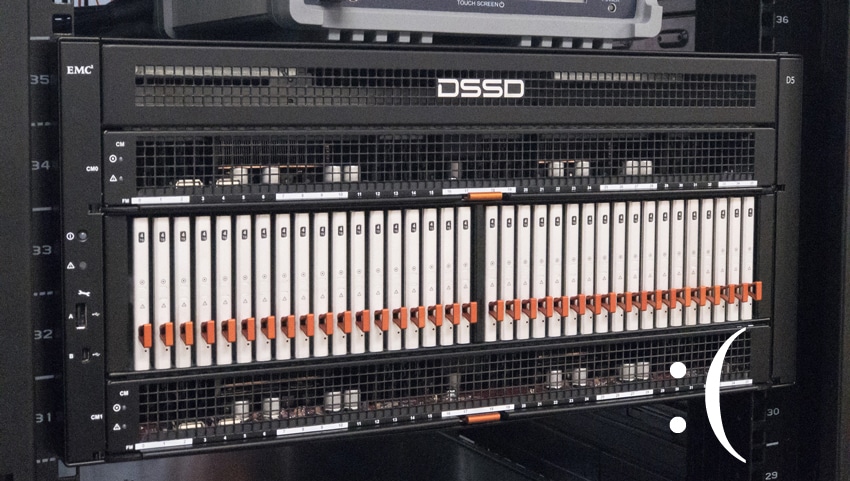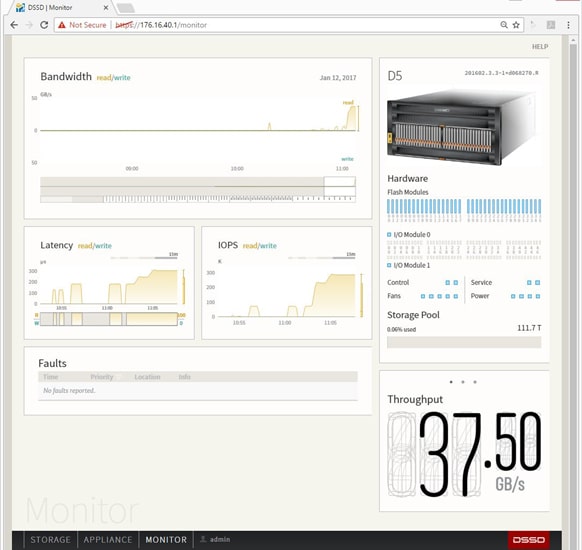Today Dell EMC indicated that it would cease production and marketing of its all-NVMe flash storage array, the DSSD D5. With only a year since its announcement, that makes a quick rise and demise for the D5 as it could have been the highest performing array on the market. Dell EMC will hope to take the team behind the project and leverage them in other areas of the business.
Today Dell EMC indicated that it would cease production and marketing of its all-NVMe flash storage array, the DSSD D5. With only a year since its announcement, that makes a quick rise and demise for the D5 as it could have been the highest performing array on the market. Dell EMC will hope to take the team behind the project and leverage them in other areas of the business.

Back in February of last year, Dell EMC (just EMC at the time) announced the all NVMe DSSD D5. As we wrote at the time, the DSSD D5 leverages NVMe technology to deliver ultra-dense, high-performance, highly available and very low latency shared flash storage for up to 48 clients. D5 is connected to each node through PCIe Gen3 and leverages NVMe technology, which delivers the performance of PCI-attached flash. At the same time, D5 is a standalone appliance that is disaggregated from compute, delivering the benefits of shared storage. This all results in performance up to 10 million IOPS, with average latency as low as 100 microseconds, and throughput as high as 100GB/s (that's gigabytes per second not gigabits per second). Additionally, DSSD D5 flash modules are fully non-volatile and feature built in vaulting circuitry to avoid any issues that may arise during power failures.
While this sounds like an amazing array there are a few issues. For starters, the price comes in at $1 million to start and only goes up from there. While this level of performance is more than enough for almost any application, there just aren’t many places that can leverage this kind of power effectively enough to justify the cost. There are a handful of customers that can use this type of performance (think the NSA or NASA) but this doesn’t make economical sense from Dell EMC’s perspective. Dell has been historically focused on volume business. The DSSD would take a long time to be cash positive or to grow enough volume for Dell EMC to invest too much into it.
Currently we have a DSSD in our lab that is in the process of testing. This makes today’s news especially tragic for us as we have found the DSSD to be the highest performing array we’ve ever tested. Though we will not complete our testing (as it is time and resource intensive), early testing was very promising. In the above screenshot one can see that we were getting performance of nearly 40GB/s with little effort.
With a bit of sorrow we close the chapter on this review. However, it is impossible to tell what future applications will demand in terms of performance and the DSSD program could be resurrected or something similar can come along with amazing performance. DSSD truly is an engineering marvel that under other circumstances may have had a productive commercial life.
Update: While the DSSD D5 stand-alone product is no more, the technology will be available as a feature across Dell EMC’s next-generation storage and industry-leading server products. This means that at least the technology, and the promise it holds on performance, will continue on in some form, even if it is not the DSSD D5 product.
Sign up for the StorageReview newsletter


